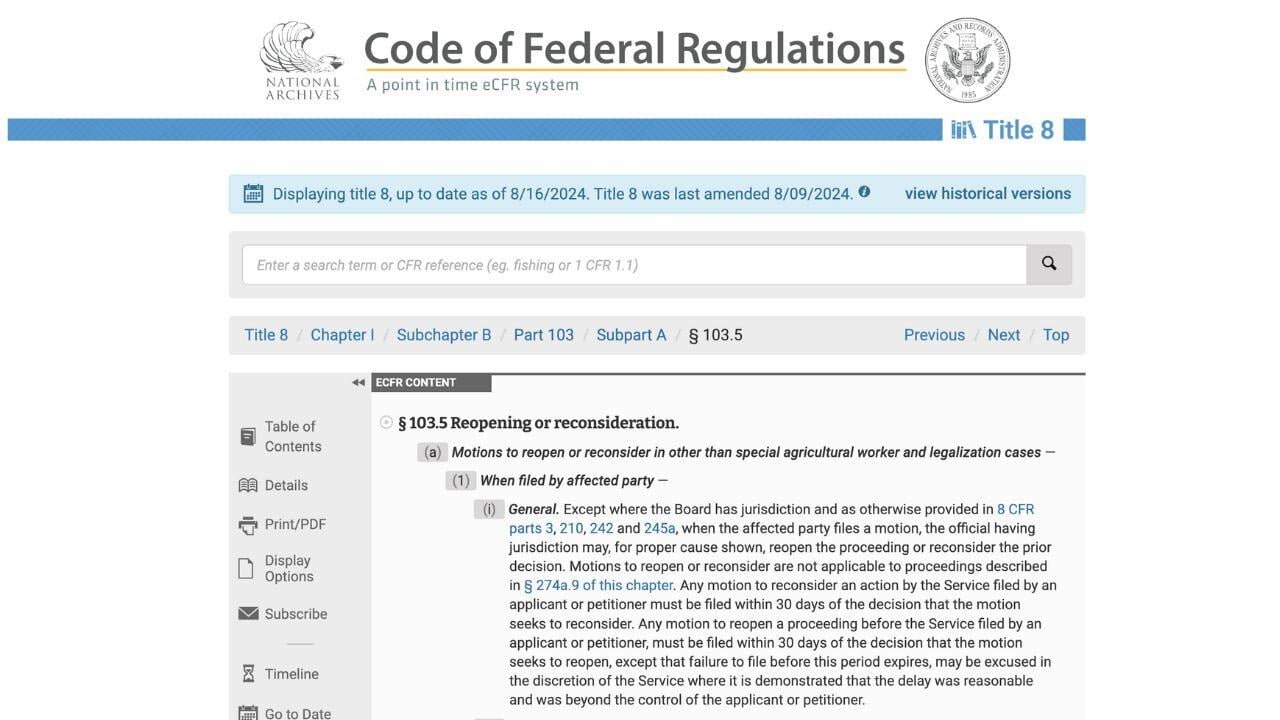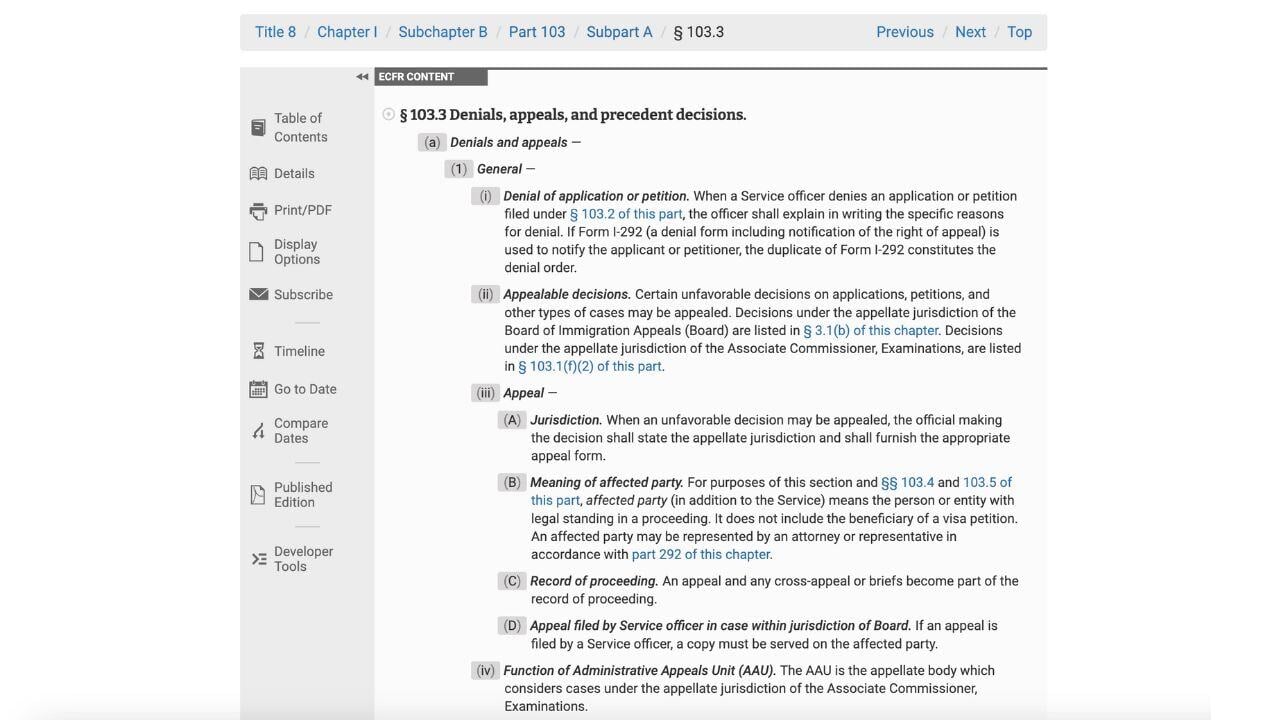Share this
How to Effectively Challenge USCIS Decisions and Turn the Tables After an Unexpected Denial
by Dean W. Liu on Aug 20, 2024
Navigating the maze of U.S. immigration procedures can be daunting, and an unexpected denial from the United States Citizenship and Immigration Services (USCIS) can be a major setback. However, an initial denial does not necessarily mean the end of your journey. Today, let's delve deeper into how you can effectively challenge USCIS authority with real legal provisions and possibly reverse their decision.

1. Understanding the Types of Responses from USCIS
When you submit an immigration application, responses can vary:
- Approval Notice: Direct approval of your application.
- Request for Evidence (RFE): If there are minor errors or incomplete documents, USCIS will request additional documentation.
- Notice of Intent to Deny (NOID): This indicates that USCIS is leaning towards denying the application but lacks sufficient evidence to approve or outright deny it. This is your cue to provide additional supporting materials.
- Denial Notice: Indicates that your application has been rejected.
2. Options After a Denial: Appeals vs. Motions
A denial is not the end. Applicants generally have choices such as:
- Appeals: This involves requesting a review of your case by a different authority than the one that issued the unfavorable decision. AAO and BIA are the typical bodies handling such reviews. Appeals are governed by Title 8, Code of Federal Regulations, Part 103.3.
- Motions: These include:
- Motion to Reopen: This motion is based on new facts not previously submitted and is governed by Title 8, Code of Federal Regulations, Part 103.5. It allows for the presentation of new evidence pertinent to the case.
- Motion to Reconsider: If you believe the decision was based on an incorrect application of law or policy, you can request a reconsideration citing the correct statutes or case laws, as outlined in Title 8, Code of Federal Regulations, Part 103.5.

Title 8, Code of Federal Regulations, Part 103.5.

Title 8, Code of Federal Regulations, Part 103.3.
3. Navigating the Process
Most applicants are not expected to understand every detail of these procedures, which is where professional immigration lawyers come in. However, knowing that there are avenues to challenge a decision is crucial.
Step 1. Review the Denial Notice
Firstly, carefully review the Denial Notice or adverse decision from USCIS. This document will provide specific reasons for the denial and inform you of your rights to file an appeal or motion. It is crucial to understand the grounds for denial, as this will guide your next steps.
Step 2. Decide Between Appeal and Motion
Based on the information in the Denial Notice, you need to decide whether to file an appeal or a motion:
- Appeal: An appeal is appropriate if you believe that the decision was wrongly made due to an incorrect application of law or USCIS policy. Appeals are submitted to the Administrative Appeals Office (AAO) or the Board of Immigration Appeals (BIA), depending on the type of case.
- Motion: A Motion to Reopen or Reconsider is filed directly with the office that issued the initial decision. A Motion to Reopen is based on new facts or evidence that was not previously available, while a Motion to Reconsider challenges the decision based on alleged errors in the application of the law.
Step 3. Prepare Your Documentation
Gather and prepare the necessary documentation to support your claim:
- For an Appeal, assemble all relevant legal documents, previous USCIS correspondence, and any new evidence that supports your case. You must clearly demonstrate why the original decision should be overturned based on legal grounds.
- For a Motion to Reopen, compile new facts and evidence that was not initially submitted with the application. This might include new affidavits, evidence of changed circumstances, or corrected documentation.
- For a Motion to Reconsider, prepare a detailed legal brief citing specific legal errors in the original decision. This should include references to relevant statutes, regulations, and case law that support your position.
Step 4. Submit Your Appeal or Motion
File your appeal or motion with the appropriate USCIS office:
- Filing Deadlines: Ensure that you meet the strict deadlines. Appeals must generally be filed within 30 days of the decision, while motions must be filed within 30 days or sometimes 33 days if the decision was mailed.
- Filing Fees: You must pay the required filing fees unless a fee waiver is applicable. Make sure to check the current fees on the USCIS website, as they can change.
Step 5. Follow Up and Attend Hearings
After filing, it’s important to follow up with USCIS to check the status of your case. If there are any hearings scheduled, attending them is crucial. At the hearing, you or your attorney will have the opportunity to present your case, argue your points, and answer any questions from the judge or reviewing authority.
Step 6. Receive the Decision
The decision timeframe can vary greatly depending on the complexity of the case and the backlog at the reviewing office. Decisions can take anywhere from a few months to over a year. Upon receiving the decision, review it thoroughly to understand the outcome and any further rights or steps you may have.
Case Study: Mrs. Lee's Adjustment of Status
Mrs. Lee's adjustment of status application was denied by USCIS due to an alleged oversight in her continuous employment verification. Despite providing meticulous documentation, USCIS claimed there was a gap in her employment history. However, after filing a Motion to Reconsider with corrected payroll records and employer affidavits, USCIS acknowledged the error and approved her application within six weeks. This case highlights the importance of thorough preparation and the ability to challenge USCIS oversights.
4. What You Should Do
If you face a USCIS error, analyze the reasons behind your application's rejection. Consulting with an experienced immigration attorney is advisable. They can help you strategically file an appeal or motion within the allowed period.
USCIS processes are intricate and prone to human error due to the manual nature of their operations. While it's essential to prepare for strict scrutiny, don't overestimate their efficiency. If you encounter an error, you should not have to pay for your mistakes. Instead, take strategic action to address any issues within the timeframe allowed.
❗️Get your Plan B now for a potential Denial
Prepare a backup plan in advance to handle potential USCIS denial. You might consider enrolling in a university and transferring your status to F-1 to extend your legal stay in the United States.

Remember, a USCIS denial is not necessarily the final word. With the right approach, accurate legal knowledge, and professional help, there are ways to challenge their decisions and potentially turn a denial into an approval. Stay informed, prepared, and proactive in your immigration journey.
Share this
- Day 1 CPT (32)
- H1B (24)
- Day 1 CPT Universities (17)
- H1B Lottery (11)
- CPT (6)
- Green card (5)
- University Application (4)
- F1 (3)
- F1 Status (3)
- International Students (3)
- USCIS (3)
- Concordia University Texas (2)
- F1 Reinstatement (2)
- H1B Layoff (2)
- H1B Status (2)
- OPT (2)
- STEM OPT (2)
- Westcliff University (2)
- change of status (2)
- Bay Atlantic University (1)
- Curry College (1)
- English Proficiency (1)
- Goldey-Beacom College (1)
- Green Card Application (1)
- H4 EAD (1)
- H4 Visa (1)
- Humphreys University (1)
- Immigration (1)
- International Student Travel (1)
- Jobs (1)
- L1 (1)
- Layoff (1)
- McDaniel University (1)
- O1 (1)
- Saint Peter's University (1)
- Salem University (1)
- Scholarships (1)
- Tax (1)
- November 2025 (2)
- October 2025 (1)
- September 2025 (3)
- August 2025 (2)
- June 2025 (1)
- May 2025 (2)
- March 2025 (2)
- November 2024 (2)
- October 2024 (4)
- September 2024 (3)
- August 2024 (3)
- July 2024 (2)
- June 2024 (7)
- May 2024 (3)
- April 2024 (4)
- March 2024 (3)
- February 2024 (5)
- January 2024 (1)
- October 2023 (3)
- September 2023 (6)
- August 2023 (10)
- July 2023 (3)
- June 2023 (4)
- May 2023 (1)
- April 2023 (1)
- February 2023 (1)
- November 2022 (1)
- October 2022 (3)
- September 2022 (1)
- August 2022 (1)

Full Day 1 CPT Universities List
Click here to view 30+ Day 1 CPT universities in different states
Scholarships & Payment Plan
Click here to explore extensive scholarships and financial aids
Get Free Assistance Now
We can help you with admission, fee waiver, and scholarships
Featured Articles
Studying and Working in the US
-Nov-22-2025-12-02-59-3078-AM.jpg)
Which Day 1 CPT Programs Offer a Fixed Summer Break? You Won’t Believe How Rare the Answer Is…

Why Curry College is a Top Choice of Day 1 CPT in Boston

Concordia University Texas Launches New MCS Program - A Top STEM Day 1 CPT Option
-Sep-20-2025-01-14-14-5002-AM.jpg)
H-1B “$100,000 Entry Fee” Rule Explained — What It Means for F1 and OPT Students and What To Do Now





.png?width=204&height=68&name=Verified%20(2).png)


.png?width=250&height=83&name=Logo%20-%20Rectangle%20(2).png)
.png?width=250&height=83&name=Logo%20-%20Rectangle%20(1).png)
